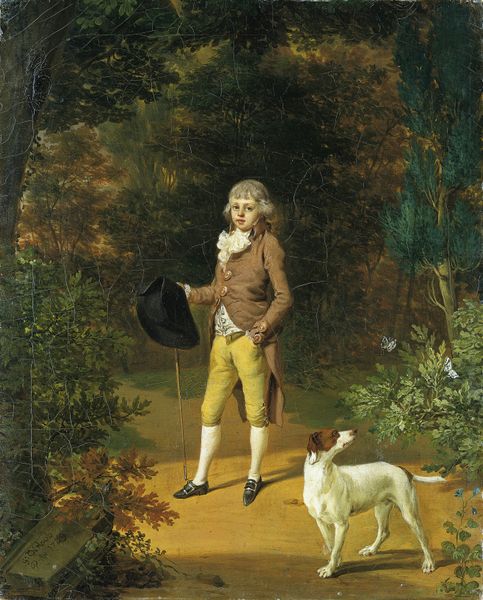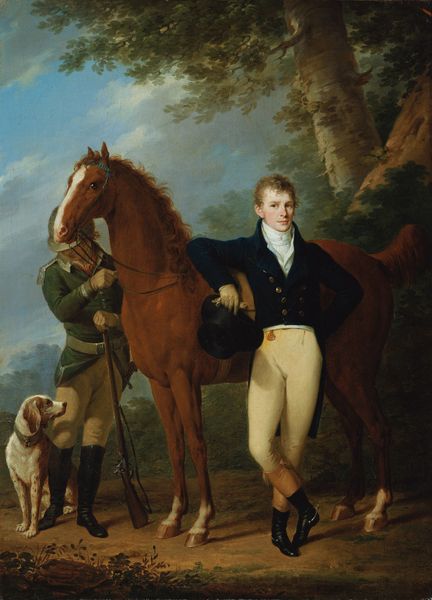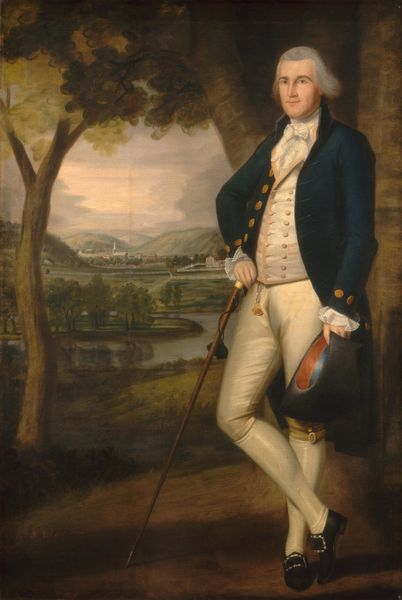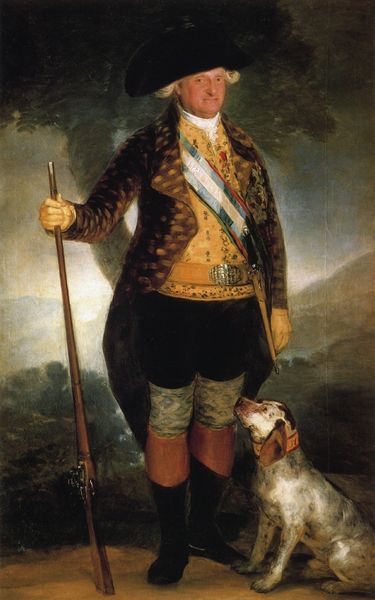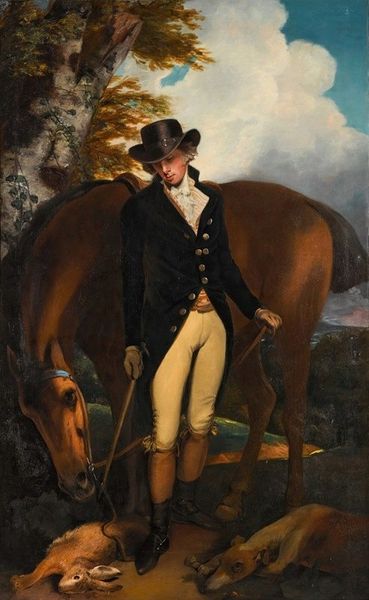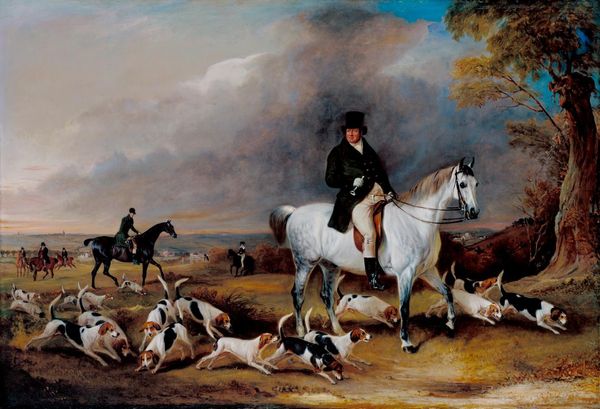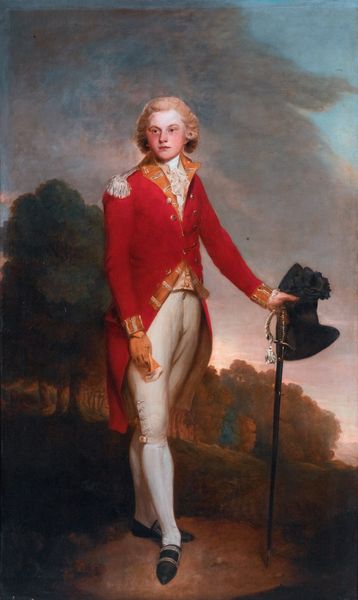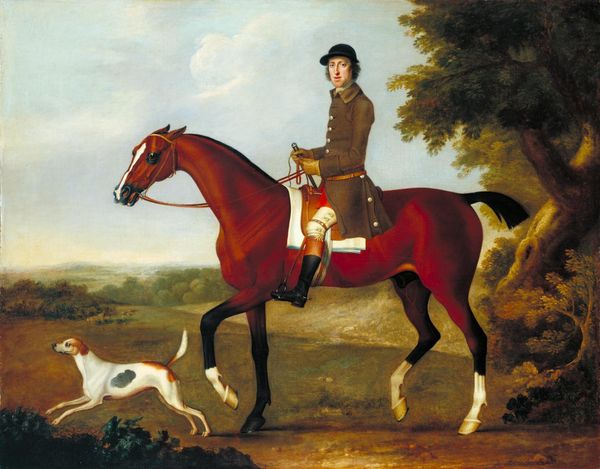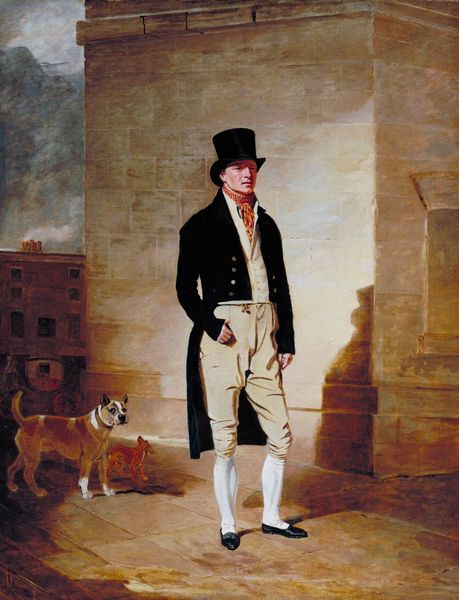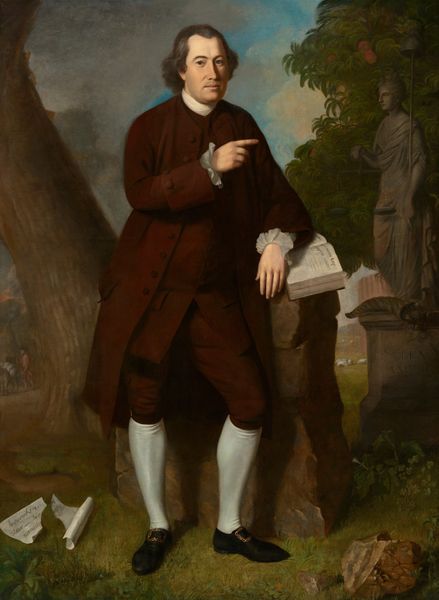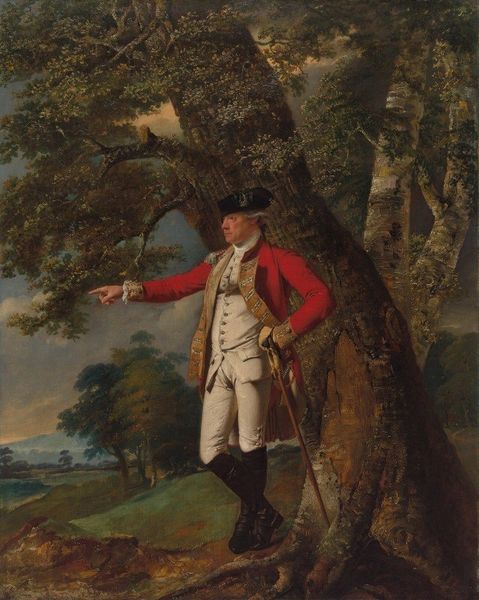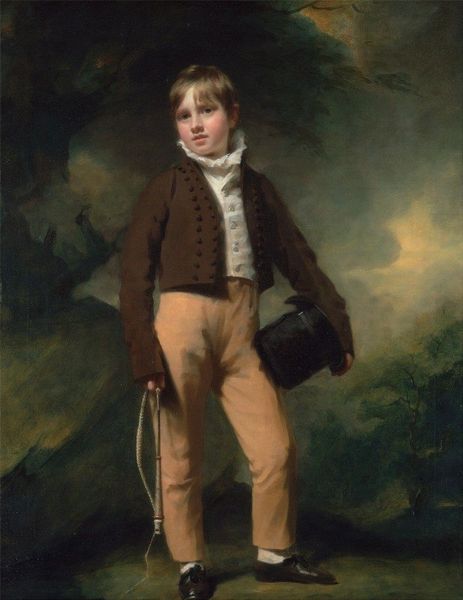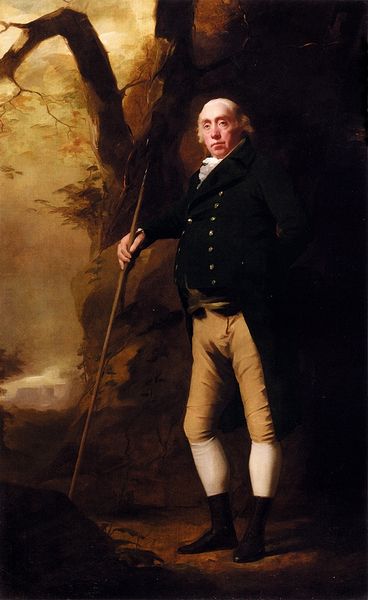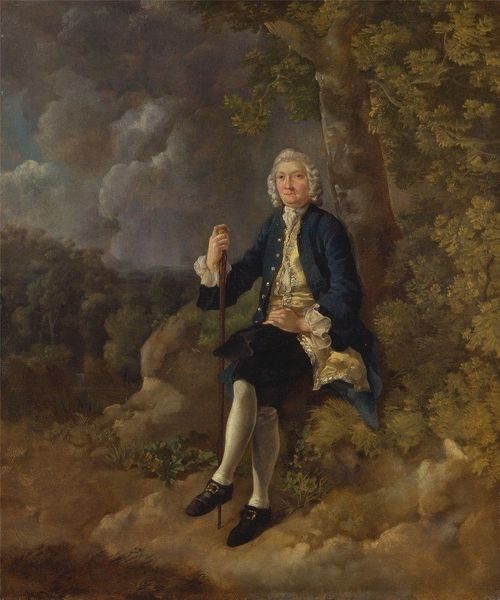
Dimensions: support: 457 x 622 mm
Copyright: CC-BY-NC-ND 4.0 DEED, Photo: Tate
Editor: Here we have George Stubbs's "Portrait of a Young Gentleman Out Shooting." It strikes me as a fascinating depiction of leisure, yet I wonder what it reveals about the labor that made such leisure possible. What do you see here? Curator: I see a portrait meticulously crafted with specific materials, likely commissioned by a wealthy patron. Consider the source of those pigments, the labor involved in preparing the canvas, and the social context that allows for this type of patronage. Editor: That's interesting. So, it is less about the individual and more about the system? Curator: Precisely. How is the act of shooting represented, and what does that say about the control of nature and resources during this period? Think about the power dynamics embedded in the scene. Editor: I never considered that. Examining the painting through the lens of production opens up a whole new perspective on the image and its history. Curator: Indeed. By understanding the material conditions and the social forces that shaped its creation, we can better grasp its significance.
Comments
tate 6 months ago
⋮
http://www.tate.org.uk/art/artworks/stubbs-portrait-of-a-young-gentleman-out-shooting-t05204
Join the conversation
Join millions of artists and users on Artera today and experience the ultimate creative platform.
tate 6 months ago
⋮
In the late 1760s Stubbs began a series of unusual experiments in the use of enamel pigments, first on copper and later - as in this case - on ceramics. He evidently hoped to produce in this medium, hitherto confined to miniatures, works of art that were not subject to the same gradual fading as oils on canvas. The process was technically difficult and not a commercial success. Nevertheless the venture resulted in a series of remarkable works of crisp, unfading brilliance, among which this is one of the most attractive to survive. The subject here is traditionally identified as William Huth Esq, son of a gentleman farmer, but nothing further is known about him. Gallery label, August 2004
